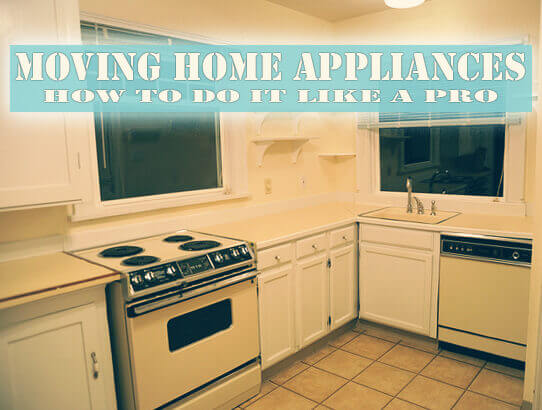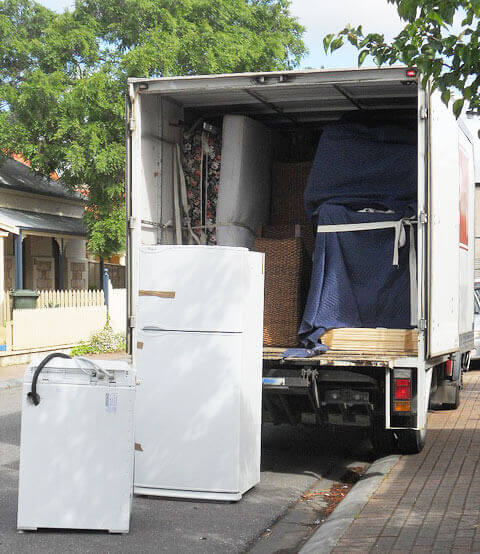 In our modern world we often forget that the comfort of our much easier than before everyday living is mostly due to the assistance of a big number of large, small and almost unnoticeable home appliances. Now we enjoy more free time to spend with our families, devote to our hobbies and (sad, but so much true) stay at work thanks to the fact that all heavy hand-work is now done by our smart washing machines, dishwashers, stoves and ovens, refrigerators, air-conditioners, clothes dryers and many more. When moving is on the horizon, we have to consider not only how to move the furniture, but also how to safely relocate those big yet delicate pieces of machinery intact. The tricky part is that each of these pieces of home equipment has its own specifics, requirements and preparations for a safe move. Hopefully reading the following tips can help you get more prepared for moving your appliances and safely relocate the comfort of your present home in your new location.
In our modern world we often forget that the comfort of our much easier than before everyday living is mostly due to the assistance of a big number of large, small and almost unnoticeable home appliances. Now we enjoy more free time to spend with our families, devote to our hobbies and (sad, but so much true) stay at work thanks to the fact that all heavy hand-work is now done by our smart washing machines, dishwashers, stoves and ovens, refrigerators, air-conditioners, clothes dryers and many more. When moving is on the horizon, we have to consider not only how to move the furniture, but also how to safely relocate those big yet delicate pieces of machinery intact. The tricky part is that each of these pieces of home equipment has its own specifics, requirements and preparations for a safe move. Hopefully reading the following tips can help you get more prepared for moving your appliances and safely relocate the comfort of your present home in your new location.
Disconnect
Prior to starting to do anything with the appliances make sure that they are properly disconnected.
• For the washing machine and the dishwasher – remove and drain the hoses and then clean and dry thoroughly.
• Disconnect (unplug) all appliances from the electrical power.
• Freezers and refrigerators should be dried out after defrosting, especially those with an ice maker.
• Stoves and ovens must be cleaned thoroughly.
• Gas ovens: Those operating on gas must be properly disconnected prior to moving by a qualified service technician. Do not forget to arrange a gas installer who will check your gas supply and connect the gas line to your appliance when arriving at your new residence.
• For all appliances – detach all removable parts and pack them safely in a box. Do not forget to clearly label each box for its contents.
Disassembly
Some of the home appliances require assistance from specialists for proper disassembly, reassembly and crating. You should call certain specialist services for your pool table, grandfather clock, etc. If you are moving desktop computer call for assistance your computer dealer for directions on securing the hard drive and other delicate components for transportation.
Protect the floor
Large sized appliances are usually heavy items, made of solid metal. They are fixed to their places by solid pegs and that’s why first thing you should have in mind is how to move them without scratching or otherwise damaging your vinyl or hardwood floor. For a proper move, arrange the help of a few neighbors, friends, colleagues or whoever is willing to help you on the moving day. Buy few furniture glides from the local hardware shop and find some old inch-thick hardboard plate. When ready to move, do the following:
a. Lay down the hardboard plate in front of the appliance, the shiny side up.
b. Lift the front feet up and slip a furniture glide on them.
c. Slide the hardboard under front feet and let the feet of the appliance step on it.
d. Lift the back side of the appliance and slide it gently forward.
e. Place another two furniture guides under the back feet, push forward and let the machine step on the hardboard.
Now the appliance can be lifted and moved across the rooms or to the shipping truck. If needed, simply put it gently on the floor, the guides will ensure that it won’t be scratched or damaged by the appliance’s feet. Avoid pivoting the appliance while sat on the floor since vinyl is prone to damaged from pivoting. The best way to reposition such heavy appliances across the house is to hire professional movers equipped with a dolly cart – the item will be lifted on the cart and moved easily without any danger for the floors. Still, you have to monitor that the door sidings and the walls remain intact when moving the appliance near them.

Although some being big and heavy, home appliances need to be thoroughly packed to protect them from incidents during transportation
Pack properly
Although some being big and heavy, home appliances need to be thoroughly packed to protect them from incidents during transportation. Most often their surfaces are being scratched or bended, they can be splotched and even broken if they fall or something else falls over them. Have in mind that the movers will not accept liability for internal damages of electronic equipment unless it is apparent that the appliance has been dropped or otherwise externally damaged, indicating movers’ neglect or mishandling.
The best way would be if you keep the original packaging of the appliance – it is designed for safe transportation and will guarantee your items are well protected. Otherwise use the usual moving packing materials, such as bubble wrap, cardboard boxes, moving blankets, moving pads and packing paper. Mark each box with signs “Fragile”. Some appliances, the refrigerator for example, need to be transported only upright and rarely on their side. For this reason mark the upright direction on the box and then secure the fridge with belts or ropes into the moving truck.
Some final words
Home appliances are expensive, mostly heavy and difficult for DIY safe relocation. The best thing is to find a reliable professional mover with proven experience and adequate equipment and manpower to handle your move. Although it may be tempting to cut costs and do it ourselves, moving appliances is a heavy and dangerous job that may worth the investment of hiring expertise movers to handle over sized and heavy appliances. It will surely eliminate a lot of hassle and stress for you. Want to do it like a pro –better hire a pro!

